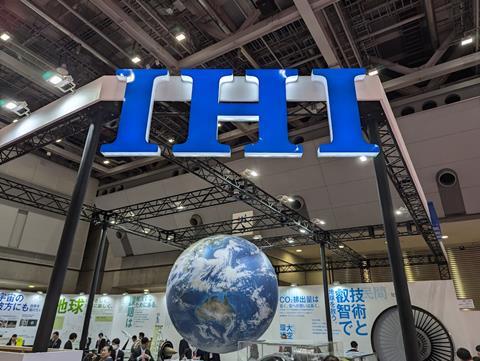The aerospace division of Japan’s IHI sees big opportunities in the defence sector, as it also looks to position itself on the next generation of commercial engines.
The Aero Engine, Space & Defense unit of IHI is critical to several major engine programmes. It developed and now produces the world’s longest low-pressure shaft as well as low-pressure turbine disks for the GE Aerospace GE9X, several components for the GEnx, and is key player of the Pratt & Whitney PW1000 programme.

At the recent Japan Aerospace show in Tokyo, FlightGlobal spoke with Atsushi Sato, managing executive officer of the unit.
“Within IHI, aerospace is a growing business, so the group is shifting human resources and investment [to this area],” says Sato.
Sato adds that IHI expects aerospace revenues to double by 2030.
For the fiscal first quarter ended 30 June, IHI’s Aero Engine, Space, and Defense division saw revenues climb 27.9% to Y100 billion ($667 million). Revenue for civil aero engines was particularly strong, jumping 52% to Y77.7 billion.
The Aero Engine, Space & Defense unit accounts for about of a quarter of the group’s overall revenue. IHI is also involved in energy, infrastructure, and industrial machinery.
In addition to continued work on key engine programmes, IHI is researching areas that will support the airline sector’s pledge to decarbonise, with research work in electrification and hydrogen.
In April, IHI announced that its hydrogen fuel cell and electrification technologies will be further refined through projects initiated by the country’s New Energy and Industrial Development Organization.
This will see IHI’s hydrogen fuel cell propulsion system scaled up to “a four-megawatt-class” powertrain. IHI has also said that it is developing the “world’s most powerful electric aircraft turbo compressor.”
Sato says that IHI’s involvement in the automobile industry has seen turbocharger technology adapted for its aviation electrification efforts. In addition, the company has experience with hydrogen pumps through its work on rockets.
Sato downplays the idea that Japan might develop a future airliner following the failure of the Mitsubishi SpaceJet programme. He suggests that Tokyo’s focus is moving Japan’s aerospace sector up the value chain from components to integration.
In March, the Japan Aircraft Development Corporation (JADC) laid out the ambition to launch a new airliner in the 2030s. It also stressed that international partnerships would likely be key to any such effort.
“Many people have the misunderstanding that the Japanese government is now aiming at the next [SpaceJet],” he says.
“I don’t think that’s true. Their aim is to enhance the Japanese aerospace industry by obtaining integration technology. Japan’s aerospace industry has been focused on component technologies.”
In addition to the company’s commercial ambitions, Sato sees potential in defence.
“Japan’s security environment has been changing, so the Japanese government has decided to enhance our defence capabilities,” says Sato.
IHI is poised to play a key role on the Global Combat Air Programme (GCAP), the joint fighter effort between Italy, Japan, and the UK.
Though Mitsubishi Heavy Industries will be Japan’s primary industrial partner in GCAP, Japan’s fighter engine know-how largely resides in IHI. The company developed the XF5 turbofan that powered the MHI X-2 Shinshin experimental fighter in the 2010s. The company also developed the advanced XF9 afterburning engine.
“We’ve conducted research and development to allow us to join the upcoming international collaboration with a good presence,” says Sato.
“The XF9 was one of the good results. We are talking with Rolls-Royce in the UK and Avio in Italy, and the collaboration is good so far. We are conducting the design of the joint demonstrator.”
IHI also produces the F7 engine for the Japan Maritime Self-Defense Force’s four-engined maritime patrol aircraft, the Kawasaki P-1. Sato says there is no formal programme yet, but he expects that IHI will undertake upgrade work for this powerplant, one objective of which may be to provide more electric power. This is also consistent with Japan’s plans to develop an electronic attack version of the P-1.
In addition to its engine development and manufacturing work, Sato says IHI continues to conduct MRO overhaul work for the PW1100G and the International Aero Engines V2500.


























